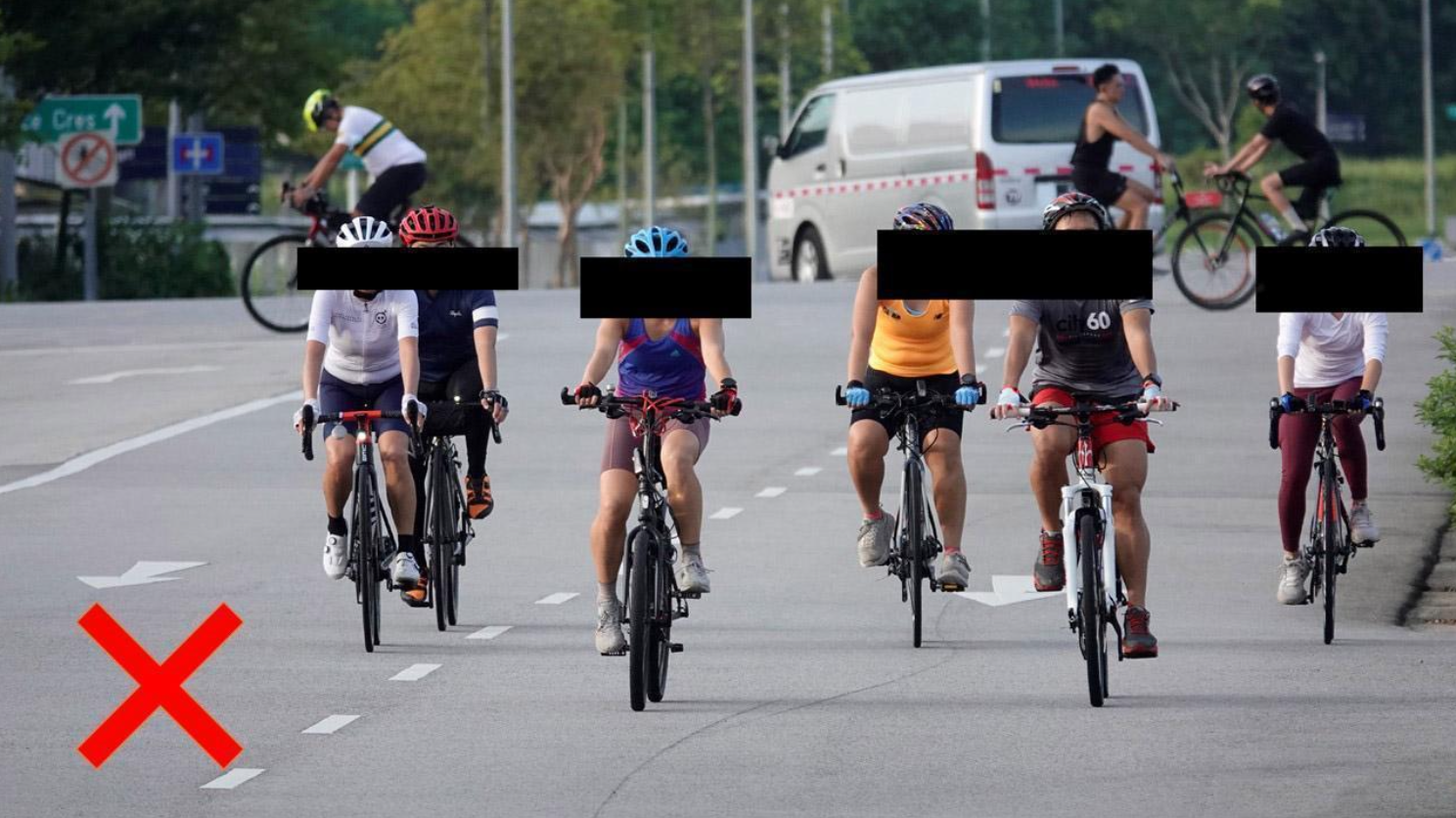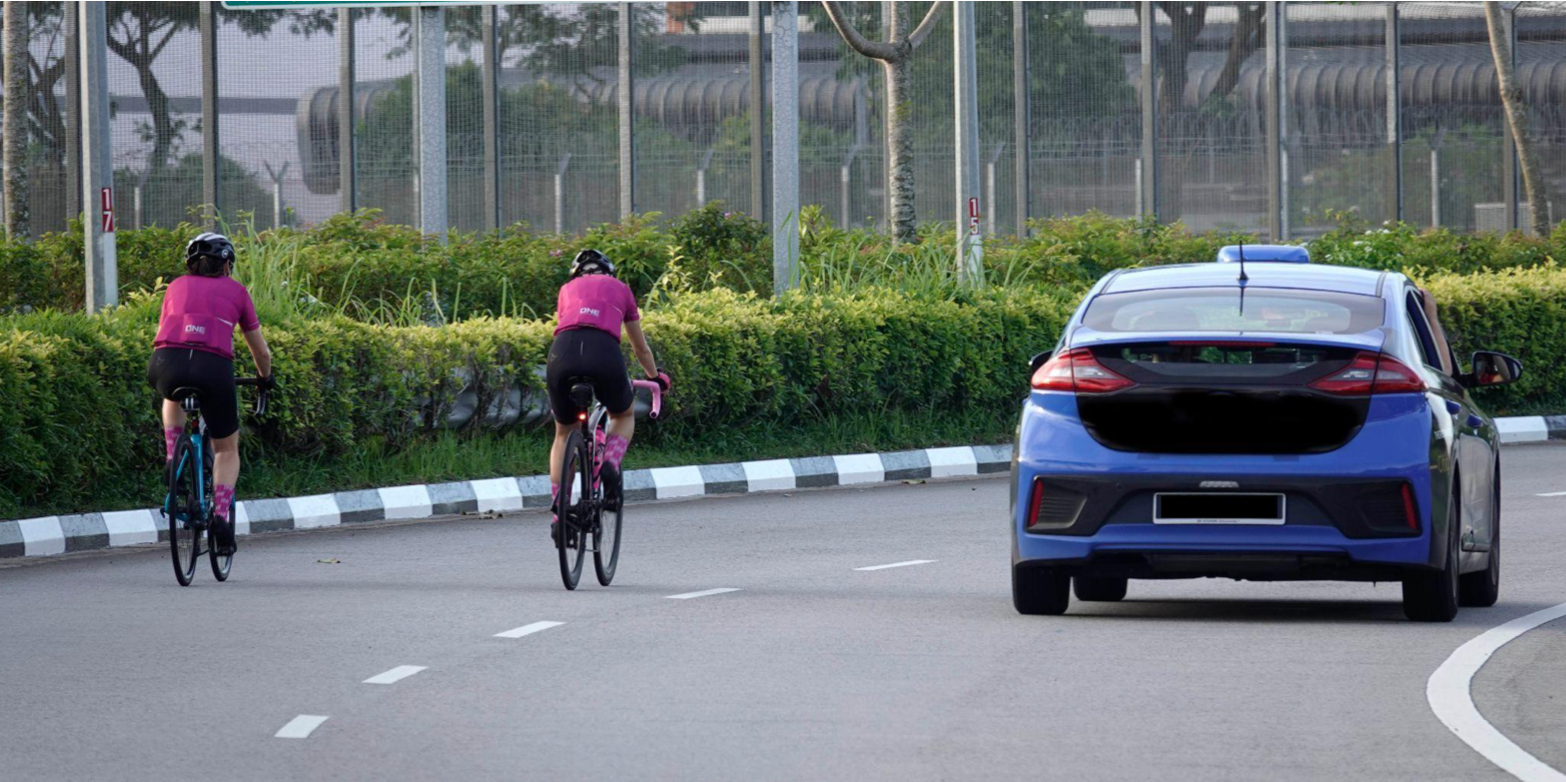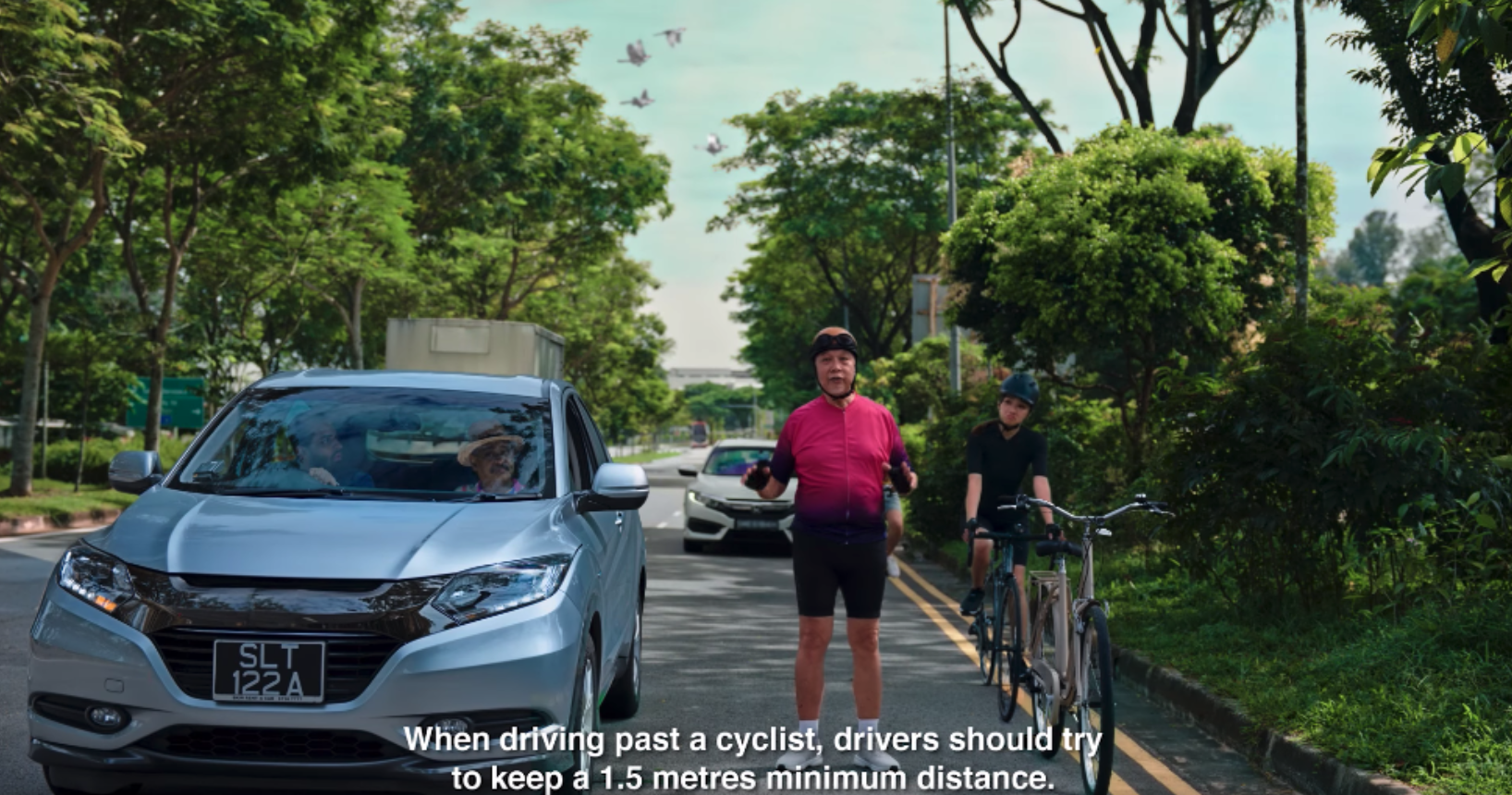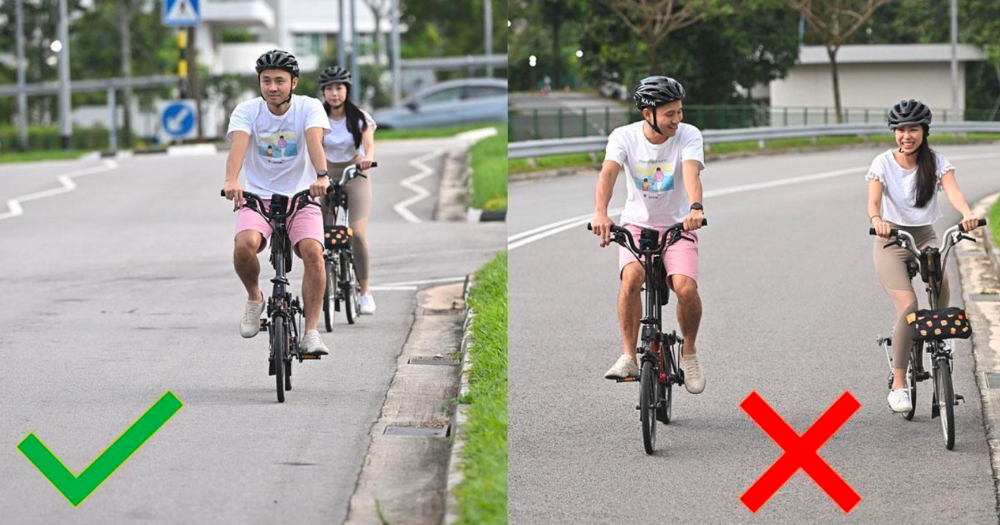Since the start of the Covid-19 pandemic, cycling has become incredibly popular as a way to exercise while sightseeing, or as a convenient way to commute for work.
In case you missed it, new rules and guidelines to enhance safety for on-road cycling have kicked in since the start of 2022.
If you get caught for errant cycling, you could be fined $150 or even charged in court for serious cases.
Cyclists travel at a much slower speed than other vehicles and unlike motorists who are protected by the metal chassis of their vehicles, cyclists are exposed and especially vulnerable when an accident occurs.
They should therefore be extra careful whilst cycling on the road.
Whether you are a cyclist or motorist, here are some ‘do’s and ‘don’ts’s before you hit the roads for a ride or drive.
Rules and guidelines on the roads for cyclists
If you intend to cycle on the road, for your safety and the safety of all road users, do remember these rules and guidelines.

1. Planning for a group cycling trip? Ensure that you keep to a group length of 5 bicycles and ride in a single file on single lane roads and bus lanes during their operation hours.
While there is safety in numbers, your cycling group should not be so big that it slows down traffic and prevents other vehicles from moving or overtaking.
To avoid holding up traffic, you should only ride in a single file on single lane roads (maximum of five cyclists) and in bus lanes during bus lane operating hours.
Only ride two abreast on roads with multiple lanes (max. of 10 cyclists), while keeping about two lamp posts’ distance between you and the next cycling group, so buses and other vehicles have the space to overtake your cycling group safely when necessary.
Do remember however, prevailing safe management measures for the pandemic are still in place and take precedence over this – so cycling in groups of more than five is not allowed during this period.
2. Stay visible with bicycle lights and bright coloured clothing, helmets are compulsory, common sense necessary.
Do your part to make sure others can spot you on the road, especially at night.
From 7pm to 7am, it’s mandated by law for you to turn on both front and rear lights on your bicycle.
Helmets are a must when cycling on roads.
Be aware of a vehicle’s blind spots and use your common sense – do not cycle on roads if you are not comfortable with doing so.
3. Follow prevailing traffic rules
Road traffic rules apply to everyone – cyclists and pedestrians included.
Remember the green signal means go, red means stop and do not go against the flow of traffic.
Do not ride on expressways and in road tunnels too.
Download this checklist for tips, and check out the list of roads where cycling is prohibited for a safer ride.
Rules and guidelines on the roads for motorists
Motorists have the responsibility to look out for more vulnerable road users such as cyclists and pedestrians.

4. Keep a minimum passing distance of 1.5m when passing cyclists
You might not feel it, but for a cyclist on two wheels, of a much smaller size and at a much slower speed, your car driving past actually creates an air pressure that might knock cyclists off their balance.
Keep a safe distance from cyclists – LTA suggests about a 1.5m distance so that you are not too close for comfort.
 Screenshot from LTA’s ‘Show care on the roads we share’ video
Screenshot from LTA’s ‘Show care on the roads we share’ video
5. Do not tailgate
Tailgating is dangerous. Following too closely means your reaction time is reduced in the event the cyclist brakes or slows down, and could lead to a collision.
It also exerts unnecessary pressure on cyclists to cycle at a speed faster than they are used to, increasing the chance of an accident. Use your common sense. Keep your distance.
Ultimately, the safety of our roads depends on each of us taking extra care, being more considerate and practising kindness on the roads.
No matter how safe or experienced a driver you think you are, do not be complacent about keeping a safe distance from the vehicle in front of you (yes, that includes bicycles) to avoid an accident.
A shared responsibility
We often view the road from our own lenses, but at the end of the day our actions on the roads will impact other road users. It takes all road users to do their part to keep our roads safe.
If we follow the rules and show consideration for fellow road users, regardless of whether they are on two or four wheels, we can build a more gracious and safe road sharing culture.
The more we share, the more we have.
All photos by Lim Weixiang, unless stated otherwise.
This article is sponsored by the Ministry of Transport.
If you like what you read, follow us on Facebook, Instagram, Twitter and Telegram to get the latest updates.
